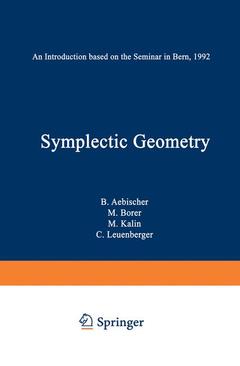Description
Symplectic Geometry, Softcover reprint of the original 1st ed. 1994
An Introduction based on the Seminar in Bern, 1992
Progress in Mathematics Series, Vol. 124
Authors: Aebischer B., Borer M., Kälin M., Leuenberger C., Bach Hans Martin
Language: English79.11 €
In Print (Delivery period: 15 days).
Add to cart244 p. · Paperback
Description
/li>Contents
/li>
1 Introduction.- 2 Darboux’ Theorem and Examples of Symplectic Manifolds.- 3 Generating Functions.- 4 Symplectic Capacities.- 5 Floer Homology.- 6 Pseudoholomorphic Curves.- 7 Gromov’s Compactness Theorem from a Geometrical Point of View.- 8 Contact structures.- A Generalities on Homology and Cohomology.- A.1 Axioms for homology.- A.2 Axioms for cohomology.- A.3 Homomorphisms of (co)homology sequences.- A.4 The (co)homology sequence of a triple.- A.5 Homotopy equivalence and contractibility.- A.6 Direct sums.- A.7 Triads.- A.8 Mayer-Vietoris sequence of a triad.- References.
These books may interest you

Advances in GeometryVolume 1 105.49 €




